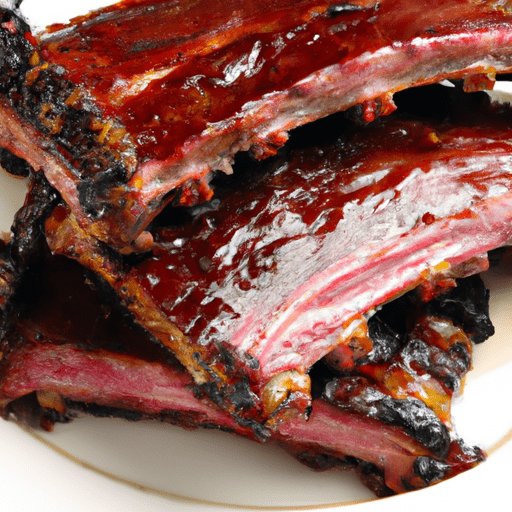Discover the Delightful World of Buffalo Back Ribs
If you’re a meat lover looking to expand your culinary horizons, look no further than buffalo back ribs. These succulent and flavorful cuts of meat have gained popularity in recent years for their unique taste, versatility in the kitchen, and impressive nutritional profile. In this blog post, we’ll dive into the delightful world of buffalo back ribs, exploring their taste, common uses in cooking, nutritional value, and uncovering some interesting history and facts along the way.
A Taste Sensation Like No Other
Buffalo back ribs offer a robust, rich, and slightly sweet flavor that is truly a treat for the taste buds. The meat is exceptionally tender, making it a true delight to sink your teeth into. Balancing both savory and sweet notes, these ribs are a delightful fusion of flavors that will leave you wanting more. The natural richness of buffalo meat shines through, providing a unique and memorable dining experience.
Versatility in Cooking
Buffalo back ribs are incredibly versatile and can be cooked using a range of techniques to suit various culinary preferences. They can be grilled, smoked, oven-baked, or slow-cooked to perfection. The meat’s inherent tenderness allows for easy preparation and quick cooking times. Whether you choose to marinate them in a delicious blend of spices or baste them with a tangy barbecue sauce, buffalo back ribs are incredibly forgiving and can withstand a variety of cooking methods with ease.
Common Uses
One of the most popular ways to enjoy buffalo back ribs is by slow-cooking them until the meat becomes fall-off-the-bone tender. Consider seasoning them with your favorite dry rub and then cooking them low and slow. This method allows the flavors to develop, resulting in a heavenly meal that can be enjoyed with friends and family.
For those who prefer a smoky flavor, smoking buffalo back ribs is a fantastic option. The meat’s inherent richness pairs exceptionally well with the smoky notes imparted by the wood, creating a mouthwatering taste sensation.
Grilling buffalo back ribs is another favorite method of preparation. By cooking them over high heat, you can achieve a delicious char while retaining their natural tenderness. Finish them with a glaze or sauce of your choice, and you’ve got a crowd-pleasing dish fit for any occasion.
Nutritional Powerhouse
In addition to their incredible taste and cooking versatility, buffalo back ribs also offer several nutritional benefits. They are an excellent source of high-quality protein, essential for muscle development and repair. Buffalo meat is also lower in fat compared to traditional beef, making it a healthier choice without compromising on flavor.
Buffalo meat is richer in iron than beef, making it a great option for those looking to boost their iron intake. It is also packed with essential vitamins and minerals, including zinc, vitamin B12, and selenium.
Exploring the History and Facts
Buffalo meat has a long history, deeply rooted in Native American culture. For centuries, buffalo played a vital role in the lives and diets of indigenous tribes. Buffalo back ribs were commonly used in traditional Native American recipes, where the entire animal was honored and utilized.
In recent years, the demand for buffalo meat and buffalo back ribs specifically has seen steady growth. This surge in popularity can be attributed to the increased interest in sustainable and ethically sourced meats. Buffalo are raised in free-range environments and are grass-fed, resulting in a lean and flavorful meat that is both healthy and environmentally friendly.
Final Thoughts
Buffalo back ribs offer a truly unique taste experience, combining rich flavors, tenderness, and nutritional benefits. Their incredible versatility in the kitchen allows for a variety of cooking techniques and flavors, making them a delight for any culinary enthusiast. Whether you choose to slow-cook, smoke, or grill them, buffalo back ribs are a surefire crowd-pleaser that will leave a lasting impression. So, why not spice up your next cooking adventure by including these delectable ribs on your menu?
Buffalo Back Ribs
Origin
Buffalo back ribs come from the American bison (scientific name: Bison bison), commonly known as the buffalo. Buffalo is native to North America and has historically been an important animal for Native Americans in terms of food, clothing, and shelter.
Common Uses
Buffalo back ribs are typically used in the same way as pork or beef ribs. They can be marinated, seasoned, and then grilled, smoked, or slow-cooked to achieve a tender and flavorful dish. The meat can easily be pulled from the bone, making it suitable for barbecuing or adding to stews and soups. Buffalo ribs are often served with barbecue sauce or other flavorful accompaniments.
Nutritional Benefits
Buffalo back ribs offer some nutritional benefits. They are a good source of protein, which is essential for building and repairing body tissues and maintaining muscle mass. Buffalo meat is typically leaner than beef, which means it contains less fat. It also provides essential vitamins and minerals, such as iron, zinc, and vitamin B12.
Unique Properties and Historical Significance
Buffalo holds cultural and historical significance to Native American tribes, as it provided sustenance and materials for various purposes. Buffalo back ribs are part of the animal’s primal cuts and offer a unique flavor profile compared to other types of ribs. Buffalo meat has gained popularity as a leaner and more sustainable alternative to beef, as it is often raised on pasture and has fewer negative impacts on the environment.
Please note that buffalo back ribs may not be as widely available as pork or beef ribs. It is recommended to check with local butchers or specialty meat suppliers for availability.




Use the share button below if you liked it.
It makes me smile, when I see it.